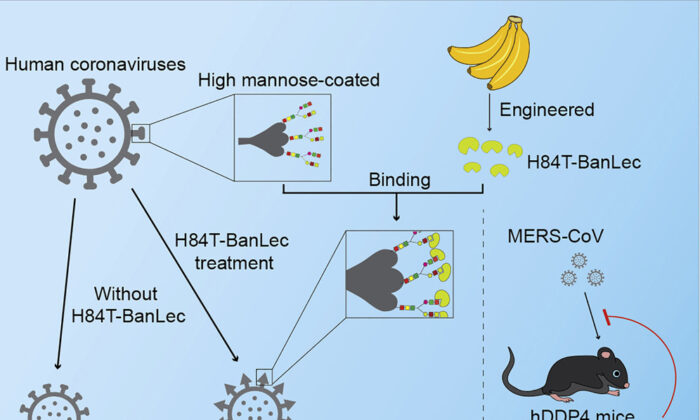Modified Banana Lectin Effectively Inhibits COVID
Distressed Patriotic Flag Unisex T-Shirt - Celebrate Comfort and Country $11.29 USD Get it here>>

Researchers from the Department of Microbiology, School of Clinical Medicine, Faculty of Medicine, of HKU, and the University of Michigan of US, Johannes Kepler University of Linz (JKU) of Austria, together with other overseas institutions, have discovered that the molecularly engineered banana lectin H84T-BanLec can inhibit the entry of viruses into host cells. In such a way, it can inhibit coronavirus infection and could become a potentially wide-ranging anti-coronavirus drug.
BanLec is a lectin isolated from bananas, and after being molecularly engineered, H84T-BanLec not only retains its antiviral activity as well as reducing mitogenicity. Experiments have shown that within cell lineage modeling, H84T-BanLec can effectively inhibit COVID-19 virus (SARS-CoV-2) and its variant strains (including Omicron), Middle East respiratory syndrome virus (MERS-CoV), SARS virus (SARS-CoV-1) and other infections.
The team also found that H84T-BanLec can bind to multiple mannose sites of the spike protein to inhibit virus entry into host cells, thereby effectively inhibiting coronavirus infection. This antiviral mechanism makes it difficult for the virus to develop its drug resistance, making H84T-BanLec a promising wide-ranging anti-coronavirus drug.
The research team pointed out that due to the special antiviral mechanism of H84T-BanLec, it may also be highly effective against new SARS-CoV-2 mutant virus strains and other new coronaviruses that may appear in the future. More importantly, H84T-BanLec also has antiviral effects against other viruses, such as the influenza virus, so intranasal H84T-BanLec may be an effective way to deal with seasonal outbreaks of respiratory viruses.
The findings have now been published in the scientific journal Cell Reports Medicine.






